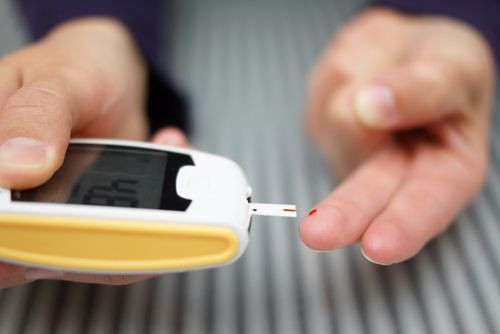Diabetes Is Still A Major Public Health Problem Despite Overall Rates Leveling Off

In 2012, the American Diabetes Association reported over 29 million Americans had diabetes, an increase from the 25.8 million in 2010. But a new JAMA study found the epidemic may finally be starting to plateau.
The study, led by Linda S. Geiss, the diabetes surveillance lead in division of diabetes translation for the Centers for Disease Control and Prevention (CDC), is the first to use nationally representative data to determine whether there were times when diabetes epidemic accelerated or slowed down over the last three decades. Geiss and her team culled data from the 1980-2012 National Health Interview Survey to pinpoint the prevalence and incidence of diagnosed diabetes (type 1 and type 2 combined) among adults ages 20-79 years old. And after a sharp increase between the years 1990-2008 — nearly five percent for both prevalence and incidence — researchers found rates leveled off during 2008-2012: down to 0.6 percent and negative 5.4 percent, respectively.
However, that wasn't the case for everyone. "Diabetes incidence, [or rate of new cases], is higher in Hispanic and non-Hispanic blacks than in non-Hispanic whites," Geiss told Medical Daily in an email. "Since incidence leveled off in non-Hispanic whites but continued to grow among Hispanic and non-Hispanic blacks, the differences between them will likely widen, further increasing racial disparities in diabetes."
In other words, added Geiss, "because incidence or prevalence continued to increase in some groups but not others, racial, ethnic, and socioeconomic disparities and differences in diabetes prevalence and incidence will likely increase." Though her study did not address why these rates are higher to begin with, she did cite prior research that has suggested the discrepancy is in part due to higher rates of diabetes risk factors, such as family history diabetes, high blood pressure, poor diet, physical inactivity, and obesity.
That doesn't mean everyone can throw diabetes caution to the wind. "Although the slowing or plateauing of the diabetes epidemic is encouraging, diabetes incidence and prevalence more than doubled before it slowed," Geiss said. "Our study did not address reasons why rates doubled, [but] it is likely due to a multiple of factors, including improved survival, enhanced detection, the aging of the population, and increases in obesity and sedentary lifestyle."
In short, this still leaves diabetes as a major publich health problem. A problem that can be solved with effective prevention and management programs. According to Geiss, these programs would entail motivating patients to lose as little as five percent of their body weight. Research has shown that modest weight loss and regular physical activity can prevent or delay type 2 diabetes.
Additionally, the CDC launched the National Diabetes Prevention Program as an easy way for patients and their families to locate community-based diabetes prevention programs, as well as to identify and refer persons at high risk of developing type 2 diabetes. Geiss said people can determine whether they are at high risk of developing type 2 diabetes and look for a prevention program when they visit the CDC's website.
Source: Geiss L, Wang J, Cheng Y, Thompson T, Barker L, et al. Prevalence and Incidence Trends for Diagnosed Diabetes Among Adults Aged 20 to 79 Years, United States, 1980-2012. JAMA. 2014.



























